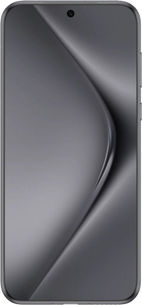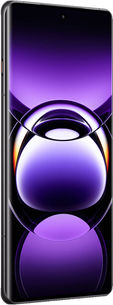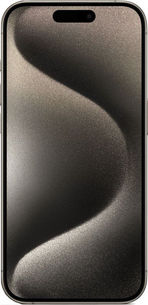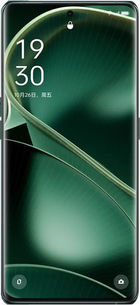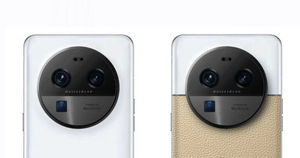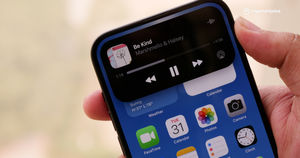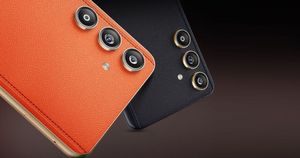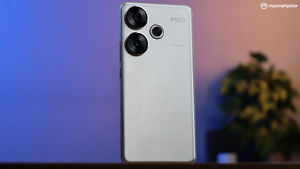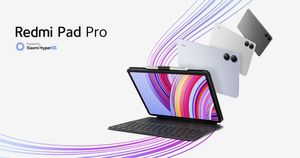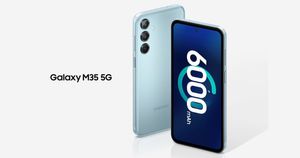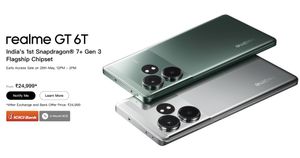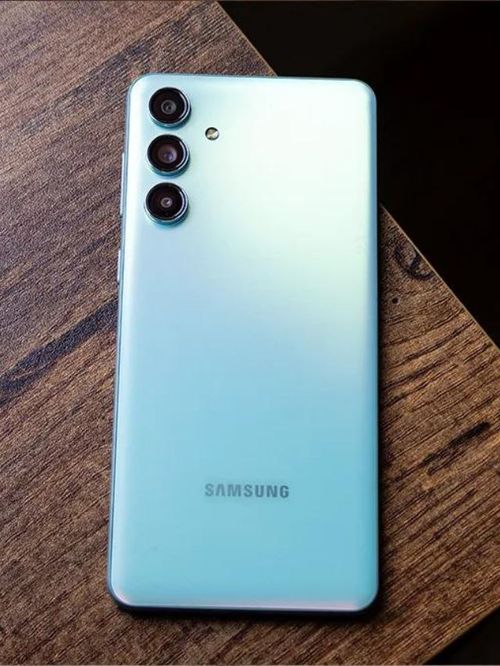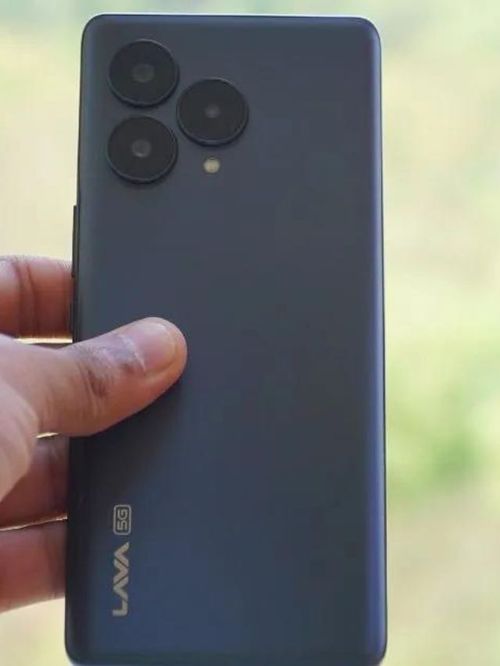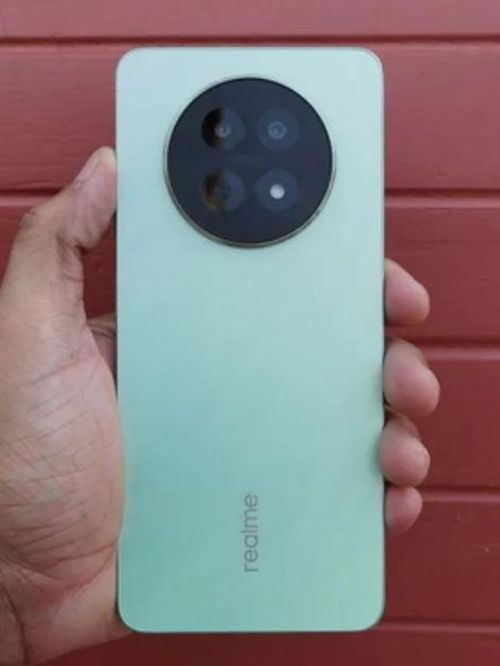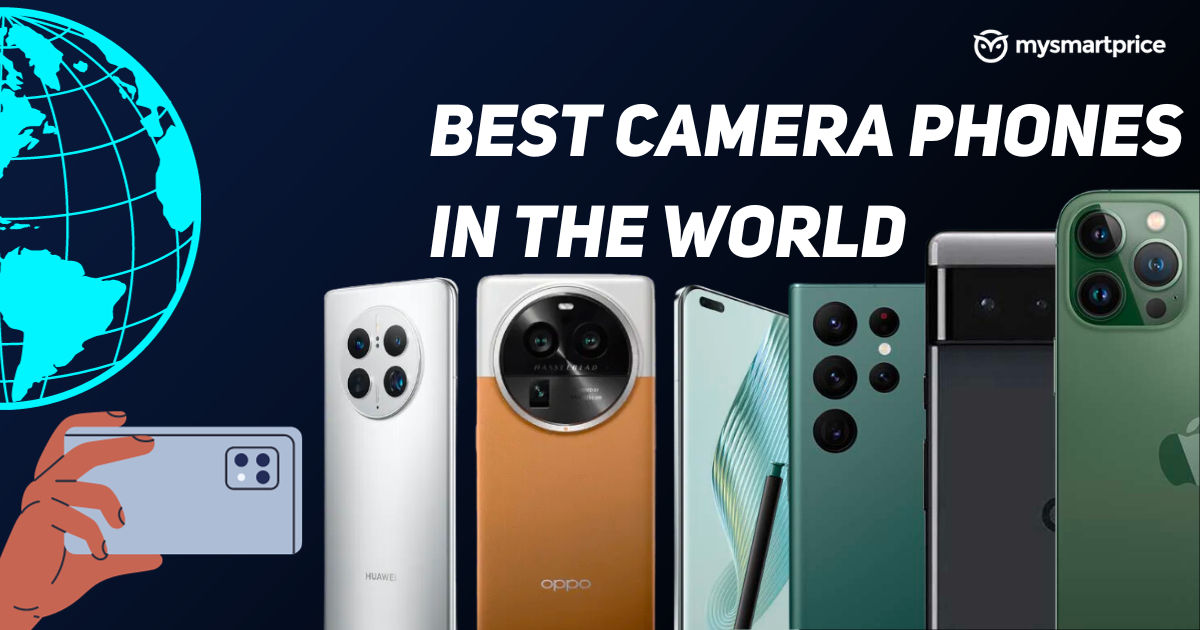
A great camera is an absolute requirement for a smartphone these days. Not everyone carries a DSLR camera around for taking photos, so the smartphone on your hand has to have the best camera, so you can take the best photos whenever you want.
But which is the best camera phone in the world? There are a lot of top smartphone cameras, and ranking them from 1 to 10 is a tough task. That’s why we’re taking help from DxOMark to rank the best smartphone cameras in the world, according to DxOMark scores of these smartphones. Let’s take a look at the 10 best camera phones in the world.
Huawei Pura 70 Ultra
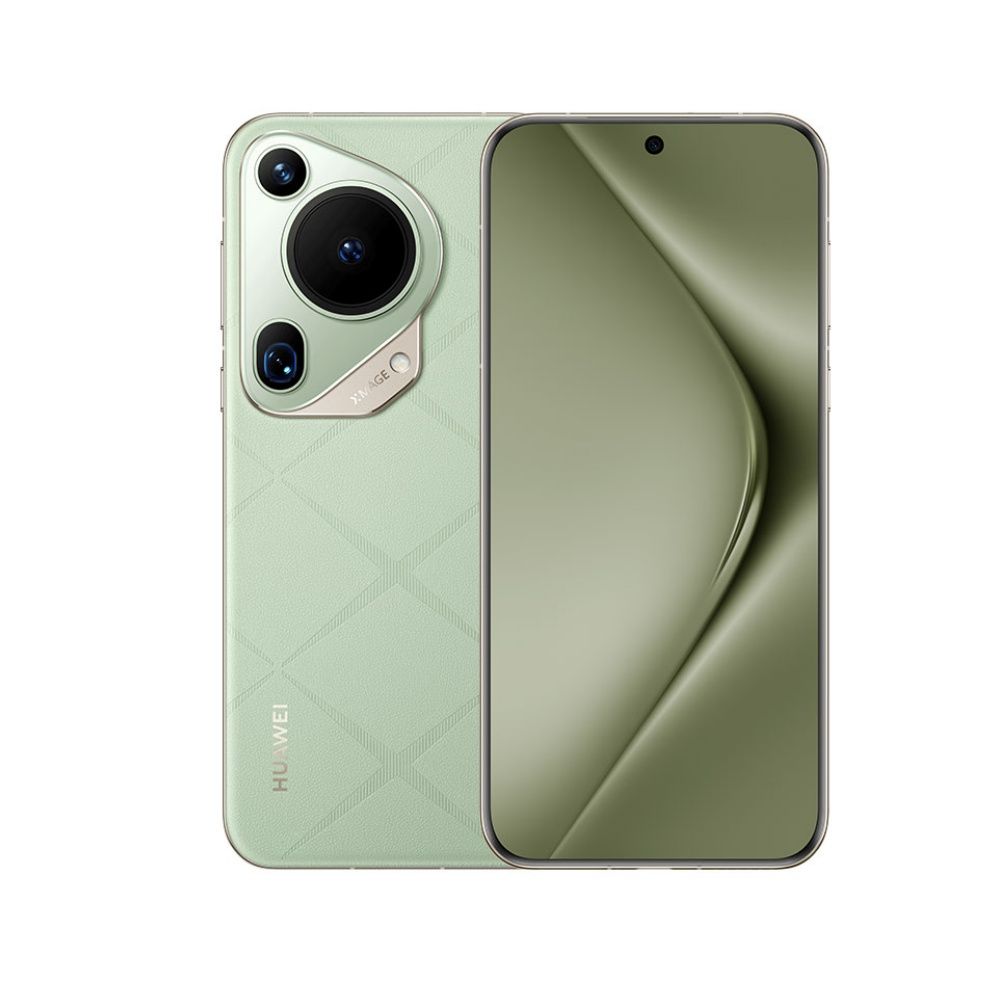
The latest flagship phone from Huawei is making headlines for its camera prowess even though it doesn’t ship with Google Play services. The phone is powered by Huawei’s own Kirin 9010 SoC, which might be a little underpowered compared to Snapdragon 8 Gen 3-powered devices. But it blows out every other smartphone in terms of camera performance.
Huawei Pura 70 Ultra comes with a 50MP 1-inch ultra-large sensor with an aperture of F1.6 and sensor-shift OIS. The phone has a 50MP telephoto sensor with support for 3.5X optical zoom and a 40MP ultrawide camera. The ultrawide camera doubles up as a macro camera dubbed “Ultra Lighting Super Macro”, which can zoom in to up to 35X macro. The phone supports great video capture with its support for HDR videos.
Huawei Pura 70 Ultra Camera Specifications
| Primary Camera Lens, Sensor size, and resolution | 50 MP, f/1.6-f/4.0, 23mm (wide), 1.0″-type, PDAF, Laser AF, sensor-shift OIS, retractable lens 50 MP, f/2.1, 90mm (telephoto), PDAF (5cm – ∞), OIS, 3.5x optical zoom 40 MP, f/2.2, 13mm (ultrawide), AF |
| Image Stabilization | OIS |
| Night Mode | Night mode photography |
| Video Recording capabilities | 4K@30fps, 1080p@30fps, HDR, gyro-EIS, OIS |
| Selfie Camera Lens, Sensor size, and resolution | 13 MP, f/2.4, (ultrawide), AF |
| Software Features | LED flash, panorama, HDR; Macro Mode, Pro Photography, Night mode video |
Pros and Cons
| Pros | Cons |
| Excellent cameras | No Google services (Play Store, YouTube, Google Maps, etc. doesn’t work) |
| Stand out design | Performance isn’t up to mark compared to competition |
| IP68 Rating | No 5G |
| Excellent display |
Huawei Pura 70 Ultra DxOMARK Score: 163
Honor Magic6 Pro

Honor Magic6 Pro is one of the best camera phones in 2024. It is powered by Snapdragon 8 gen 3 SoC and has a 6.8-inch OLED display that can reach 5,000 nits in peak brightness.
Honor Magic6 Pro comes with Super Dynamic HONOR Falcon Camera, a 50MP 1/1.3-inch large sensor with f/1.4-f/2.0 self-adjusting aperture OIS. The periscope telephoto sensor takes the megapixel count to the max with its 180MP sensor. It can zoom in 2.5X optically and 100X digitally. The ultrawide camera is a 50MP one, which can capture a 122° field of depth.
Honor Magic6 Pro Camera Specifications
| Primary Camera Lens, Sensor size, and resolution | 50 MP, f/1.4-2.0, 23mm (wide), 1/1.3″, 1.2µm, Laser AF, PDAF, OIS 180 MP, f/2.6, (periscope telephoto), 1/1.49″, 0.56µm, PDAF, OIS, 2.5x optical zoom 50 MP, f/2.0, 13mm, 122˚ (ultrawide), 1/2.88″, 0.61µm, AF |
| Image Stabilization | OIS |
| Video Recording capabilities | 4K@24/30/60fps, 1080p@30/60/120/240fps, gyro-EIS, OIS, HDR, 10-bit video |
| Selfie Camera Lens, Sensor size, and resolution | 50 MP, f/2.0, 22mm (wide), 1/2.93″, 0.6µm, AF |
| Software Features | LED flash, HDR, panorama, Night Mode |
Pros and Cons
| Pros | Cons |
| Excellent display | Software could be better |
| 3D Face unlock like an iPhone | |
| Looks stunning | |
| IP68 Rating |
Honor Magic6 Pro DxOMARK Score: 158
Oppo Find X7 Ultra

Oppo Find X7 Ultra is the next phone in this list and it has one of the best camera hardware on a smartphone in 2024. The phone is a true flagship, with it being powered by Snapdragon 8 Gen 3 and having a 6.82-inch AMOLED display with a resolution of 2K and a peak brightness of 4500 nits.
Oppo touts this phone as the first phone with a quad main camera with a HyperTone image engine. The phone comes with a 1-inch Sony LYT-900 sensor primary camera. There are two telephoto cameras – a 50MP 2.8x optical zoom lens and a 50MP 6x optical zoom lens. Then there’s the 50MP ultrawide camera that captures a 123˚ field of depth.
Oppo Find X7 Ultra Camera Specifications
| Primary Lens, Sensor size, and resolution | 50 MP, f/1.8, 23mm (wide), 1.0″-type, 1.6µm, multi-directional PDAF, Laser AF, OIS 50 MP, f/2.6, 65mm (periscope telephoto), 1/1.56″, 1.0µm, 2.8x optical zoom, multi-directional PDAF (25cm – ∞), OIS 50 MP, f/4.3, 135mm (periscope telephoto), 1/2.51″, 0.7µm, 6x optical zoom, dual pixel PDAF (35cm – ∞), OIS 50 MP, f/2.0, 14mm, 123˚ (ultrawide), 1/1.95″, 1.0µm, PDAF |
| Image Stabilization | OIS |
| Video Recording capabilities | 4K@30/60fps, 1080p@30/60/240fps; gyro-EIS; HDR, 10‑bit video, Dolby Vision |
| Selfie Lens, Sensor size, and resolution | 32 MP, f/2.4, 21mm (wide), 1/2.74″, 0.8µm, PDAF |
| Software Features | Hasselblad Color Calibration, LED flash, HDR, panorama |
Pros and Cons
| Pros | Cons |
| Excellent camera hardware | Only available in China |
| Unique design | Ultra-wide camera could be better |
| Faster charging than rivals |
Oppo Find X7 Ultra DxOMARK Score: 157
Huawei Mate 60 Pro+
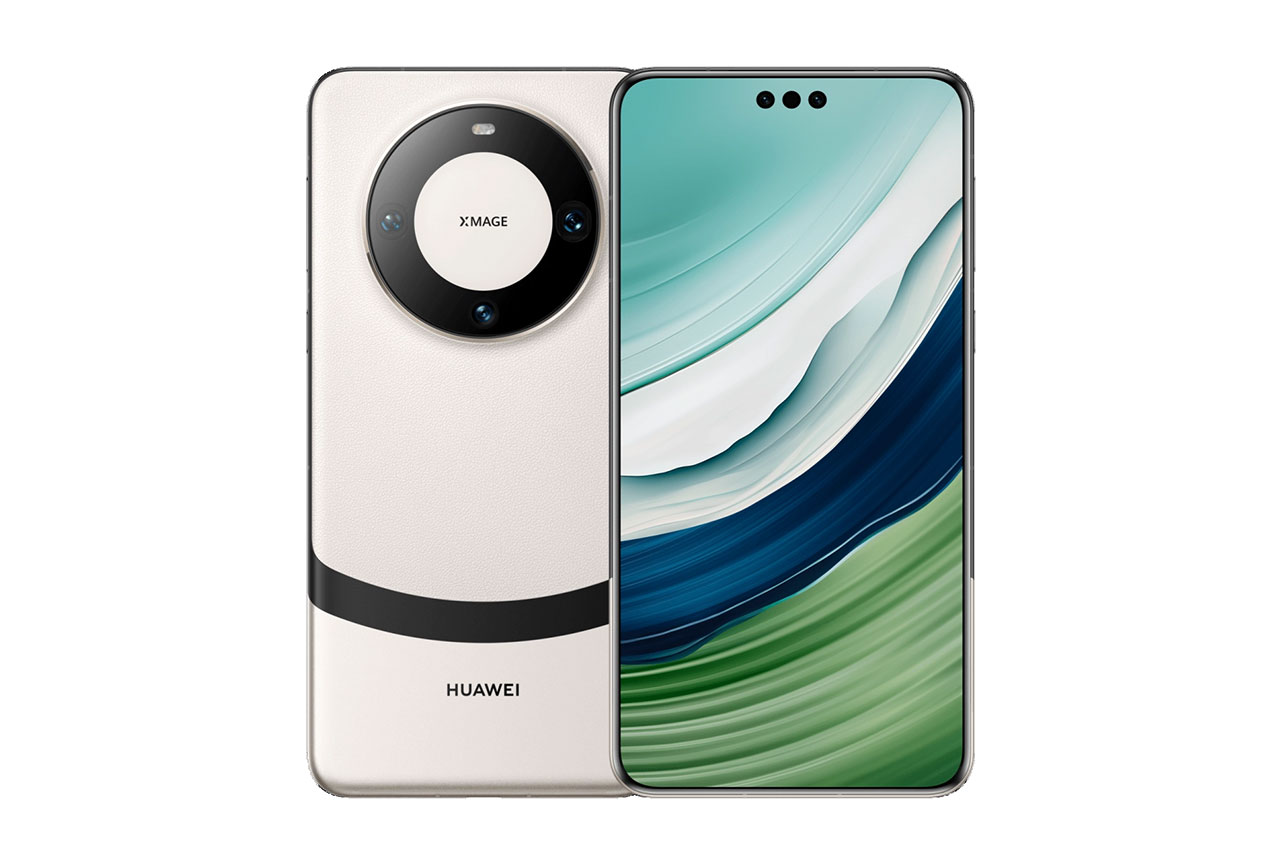
The Huawei Mate 60 Pro+ raises the bar for premium camera performance. Despite the lack of Google services, it distinguishes out with a 6.82-inch curved OLED display with a QHD+ resolution and a smooth 120Hz refresh rate. Its tri-cluster CPU and 24-core Mali-G710 GPU give a blistering performance, thanks to Huawei’s Kirin 9000S processor.
The innovative camera system with XD Optics technology is the highlight feature, featuring a 48MP primary sensor, a 48MP periscope telephoto lens (5x optical zoom), and a 40MP ultrawide lens. The big 5000mAh battery, 88W SuperCharge, and superb cameras make the Mate 60 Pro+ an attractive pick, particularly in areas where Huawei’s ecosystem thrives.
Huawei Mate 60 Pro+ Camera Specifications
| Lens, Sensor size, and resolution | 48 MP, f/1.4-f/4.0, 24mm (wide), PDAF, Laser AF, OIS 48 MP, f/3.0, 90mm (periscope telephoto), PDAF, OIS, 3.5x optical zoom 40 MP, f/2.2, 13mm, 120˚ (ultrawide), PDAF |
| Image Stabilization | OIS + EIS |
| Night Mode | Night mode photography |
| Video Recording capabilities | 4K@30/60fps, 1080p@30/60/120/240/480fps, 720p@960fps, 720p@3840fps, HDR |
| Selfie Camera | 13 MP, f/2.4, 18mm (ultrawide) TOF 3D, (depth & biometrics sensor) |
| Software Features | Macro Mode, Pro Photography, Night mode video |
Pros and Cons
| Pros | Cons |
| Excellent camera hardware | No Google services (Play Store, YouTube, Google Maps, etc. doesn’t work) |
| Super fast wired and wireless charging | Performance is inferior to other flagships |
| No 5G |
Huawei Mate 6 Pro+ DXOMARK Score: 157
Huawei P60 Pro
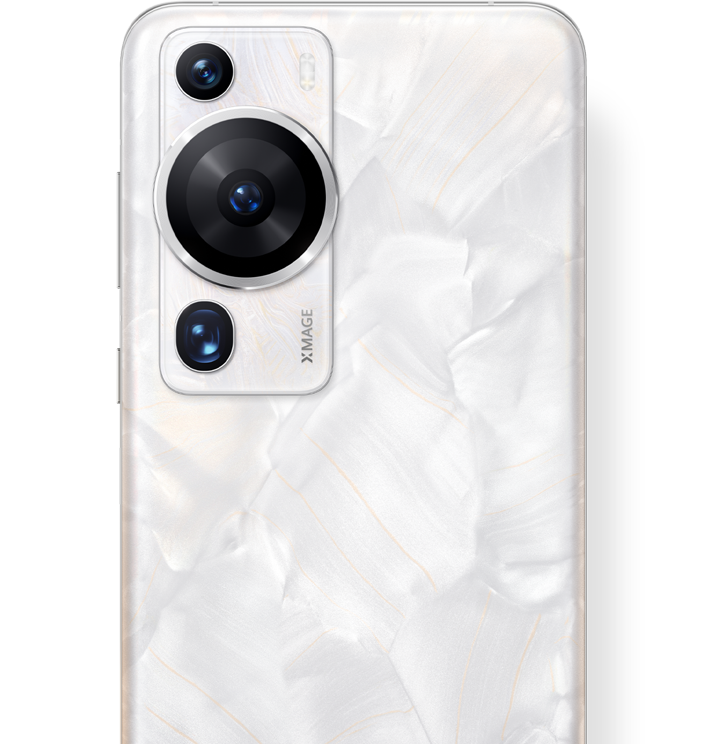
Huawei has another stellar performer up there in the list with the Huawei P60 Pro. This phone comes with a stacked triple camera setup of 48MP primary, 48MP telephoto and 13MP ultrawide cameras.
The phone features a fresh new design for the camera array, which even looks like a funky camera. The 48MP sensors are both RYYB sensors which Huawei is famous for. Huawei calls the camera combo of this phone the Ultra Lighting XMAGE Camera, which offers great shots in all conditions. The phone is powered by Snapdragon 8+ Gen 1 and has a curved 2K LTOP OLED display of 6.67 inches.
Huawei P60 Pro Camera Specifications
| Lens, Sensor size, and resolution |
|
| Image Stabilization | OIS + EIS |
| Night Mode | Night mode photography |
| Video Recording capabilities | 4K@30/60fps, 1080p@30/60fps, 1080p@960fps; gyro-EIS |
| Selfie Camera | 13 MP, f/2.4, (ultrawide) |
| Software Features | Macro Mode, Pro Photography, Night mode video |
Pros and Cons
| Pros | Cons |
| Unique and stunning design | No Google services (Play Store, YouTube, Google Maps, etc. doesn’t work) |
| Great set of speakers | Performance is inferior to other flagships |
| No 5G |
Huawei P60 Pro DXOMARK Score: 156
Apple iPhone 15 Pro Max
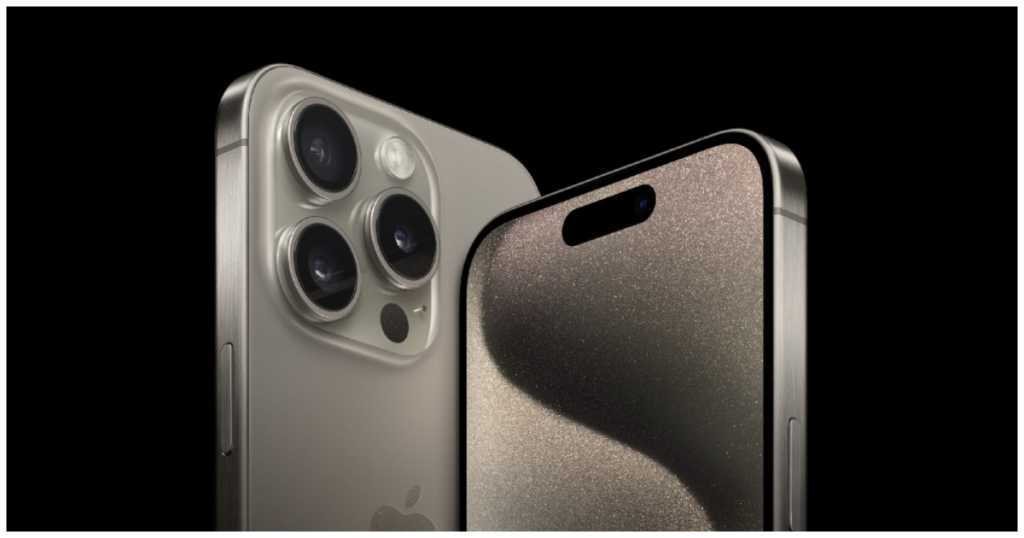
iPhones are one of the most boring smartphone cameras in a good way. iPhones have been around for 17 years and have been almost the same since then, with tweaks and improvements over time. Every iPhone users know and are familiar with the UI and features. With the iPhone 15 Pro Max Apple introduced a new 5X telephoto lens with a tetraprism design.
The all-new iPhone 15 Pro Max also comes equipped with the latest A17 Pro SOC that further enhances image processing. And, the brand-new lens coating also helps with the lens flair issues previously found on iPhones. Also now with the new USB C 3 port, you can record your ProRAW videos directly to the external storage as a bonus.
iPhone 15 Pro Max Camera Specifications
| Lens, Sensor size, and resolution | 48 MP, f/1.8, 24mm (wide), 1/1.28″, 1.22µm, dual pixel PDAF, sensor-shift OIS 12 MP, f/2.8, 120mm (periscope telephoto), 1/3.06″, 1.12µm, dual pixel PDAF, 3D sensor‑shift OIS, 5x optical zoom 12 MP, f/2.2, 13mm, 120˚ (ultrawide), 1/2.55″, 1.4µm, dual pixel PDAF TOF 3D LiDAR scanner (depth) |
| Image Stabilization | Sensor-Shift Stabilization |
| Night Mode | Auto Night Mode, Night Portrait Mode, Night Video mode |
| Video Recording capabilities | 4K@24/25/30/60fps, 1080p@25/30/60/120/240fps, 10-bit HDR, Dolby Vision HDR (up to 60fps), ProRes, Cinematic mode (4K@24/30fps), 3D (spatial) video, stereo sound rec. |
| Selfie Camera | 12 MP, f/1.9, 23mm (wide), 1/3.6″, PDAF |
| Software Features | Auto Night Mode, After shot portrait for humans, Dogs and Cats, Night Portrait mode using LiDAR |
Pros and Cons
| Pros | Cons |
| Rounded edges that don’t hurt | No adapter in the box |
| Excellent performance | Action button can perform only 1 task at a time |
| Best display | Slow charging speed |
| Astonishing camera |
iPhone 15 Pro Max DXOMARK Score: 154
Apple iPhone 15 Pro
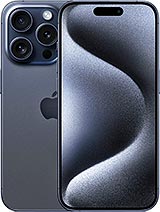
Apple iPhone 15 Pro features the same camera setup as that of the iPhone 15 Pro Max and is featured alongside the former. iPhone 15 Pro features a triple camera setup championed by the 48MP primary camera, a 12MP periscope telephoto camera that can go up to 5X zoom, 12MP ultrawide camera with a field of view of 120˚.
With the iPhone 15 Pro, Apple advertises that “it’s like having seven pro lenses in your pocket” and the company says that the 48MP main camera is more advanced than ever and captures a new level of detail and colour. The phone is powered by the latest Apple A17 Pro SoC and has a 6.1-inch Super Retina XDR OLED display.
In MySmartPrice testing, we praised this phone’s professional-grade video recording capabilities and amazing daylight, portrait, and night mode camera output.
iPhone 15 Pro Camera Specifications
| Lens, Sensor size, and resolution | 48 MP, f/1.8, 24mm (wide), 1/1.28″, 1.22µm, dual pixel PDAF, sensor-shift OIS 12 MP, f/2.8, 120mm (periscope telephoto), 1/3.06″, 1.12µm, dual pixel PDAF, 3D sensor‑shift OIS, 5x optical zoom 12 MP, f/2.2, 13mm, 120˚ (ultrawide), 1/2.55″, 1.4µm, dual pixel PDAF TOF 3D LiDAR scanner (depth) |
| Image Stabilization | Sensor-Shift Stabilization |
| Night Mode | Auto Night Mode, Night Portrait Mode, Night Video mode |
| Video Recording capabilities | 4K@24/25/30/60fps, 1080p@25/30/60/120/240fps, 10-bit HDR, Dolby Vision HDR (up to 60fps), ProRes, Cinematic mode (4K@24/30fps), 3D (spatial) video, stereo sound rec. |
| Selfie Camera | 12 MP, f/1.9, 23mm (wide), 1/3.6″, PDAF |
| Software Features | Auto Night Mode, After shot portrait for humans, Dogs and Cats, Night Portrait mode using LiDAR |
iPhone 15 Pro DXOMARK Score: 154
Pros and Cons
| Pros | Cons |
| Lightweight and ergonomic | Even pricier than ever before |
| Outstanding display | Inconsistent dynamic range in photos |
| Loud and clear speakers | No charger in the box |
| Raw power on tap | Average battery life, slow charging speeds |
| USB Type-C is finally here! | |
| Action button has potential | |
| Professional-grade video recording capabilities | |
| Amazing daylight, portrait, and night mode camera output |
Google Pixel 8 Pro
![]()
Google’s Pixel and great pictures are synonyms for each other. Google’s Pixel series smartphones take images that can be compared to no other smartphone camera. After seeing the spec sheet of the Google Pixel 8 Pro you might feel that it must be an average smartphone camera system as it does not feature big numbers like 10X optical zoom or 200MP sensor or whatnot.
But, don’t be fooled by the numbers. Google’s Pixel lineup is all about computational photography which is done in post-processing. Google does much magic in the post-processing and with the Pixel 8 Pro it has gotten better with many new and amazing features that feel nothing but pure sorcery.
Pixel 8 Pro Camera Specifications
| Lens, Sensor size, and resolution | 50 MP, f/1.7, 25mm (wide), 1/1.31″, 1.2µm, dual pixel PDAF, multi-zone Laser AF, OIS 48 MP, f/2.8, 113mm (telephoto), 1/2.55″, 0.7µm, dual pixel PDAF, OIS, 5x optical zoom 48 MP, f/2.0, 126˚ (ultrawide), 0.8µm, dual pixel PDAF |
| Image Stabilization | OIS + EIS |
| Night Mode | Night Sight, Astro Photography |
| Video Recording capabilities | 4K@30/60fps, 1080p@24/30/60/120/240fps, gyro-EIS, OIS, 10-bit HDR |
| Selfie Camera | 4K@30/60fps, 1080p@24/30/60/120/240fps |
| Software Features | Magic Eraser, Video Boost, Clear Voice, Human and Animal Portrait |
Pros and Cons
| Pros | Cons |
| Offers significant AI capabilities | No charger in the box |
| Smooth OLED display, 120Hz refresh rate | Supports only 30W charging |
| Stock Android experience | Room for improvement in gaming performance |
| Great camera capabilities |
Pixel 8 Pro DXOMARK Score: 153
Oppo Find X6 Pro
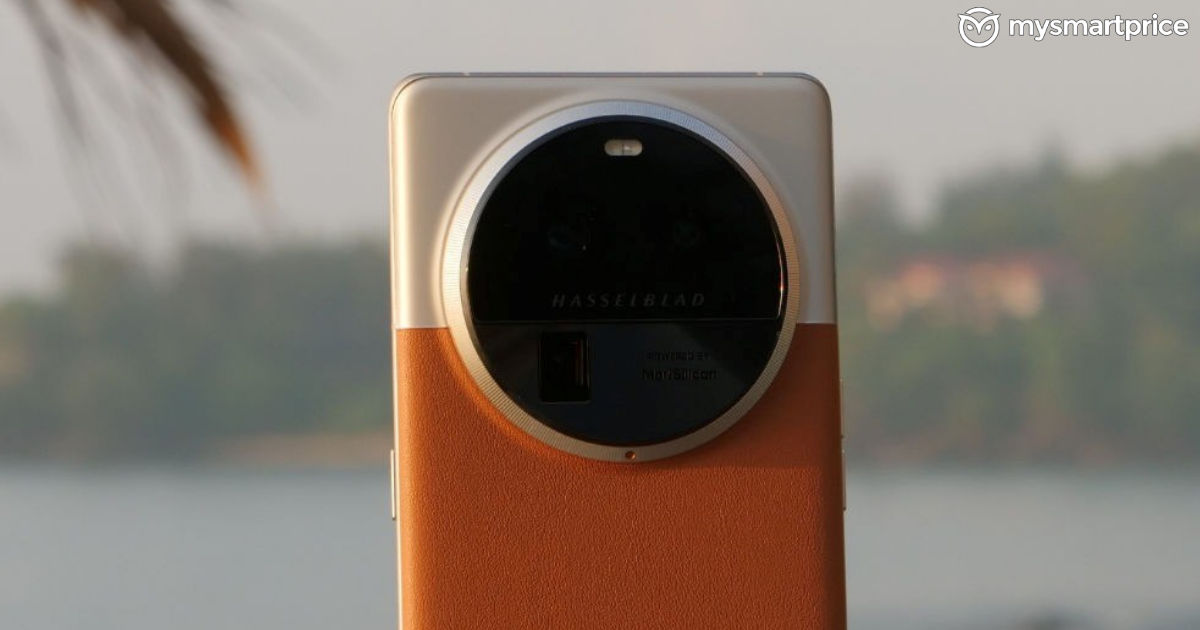
The Oppo Find X6 Pro is distinguished by its 6.82-inch display and a huge circular camera array that houses three excellent 50MP sensors—a primary, ultrawide, and periscope telephoto. It is powered by a Qualcomm Snapdragon 8 Gen 2 processor and has Oppo’s MariSilicon X image NPU with Hasselblad tuning.
The camera produces colourful images, even though its 120x super zoom leans towards the artsy. The phone is huge in hand, but it compensates with a longer battery life and a 100W charger that can charge it to 100% in 30 minutes. Despite its distinctive look, the Oppo Find X6 Pro appears as a formidable flagship, capable of fighting rivals if it goes beyond its Chinese market debut.
We were impressed by the cameras of the Oppo Find X6 Pro, praising it for its stunning cameras and gorgeous display.
Oppo Find X6 Pro Camera Specifications
| Lens, Sensor size, and resolution | 50 MP, f/1.8, 23mm (wide), 1.0″-type, 1.6µm, multi-directional PDAF, Laser AF, OIS 50 MP, f/2.6, 65mm (periscope telephoto), 1/1.56″, 1.0µm, 2.8x optical zoom, multi-directional PDAF, OIS 50 MP, f/2.2, 15mm, 110˚ (ultrawide), 1/1.56″, 1.0µm, multi-directional PDAF |
| Image Stabilization | 6 Axis OIS + EIS |
| Night Mode | Super Night Mode Photography, Night Mode portrait |
| Video Recording capabilities | 4K@30/60fps, 1080p@30/60/240fps; gyro-EIS; HDR, 10‑bit video, Dolby Vision |
| Selfie Camera | 32 MP, f/2.4, 21mm (wide), 1/2.74″, 0.8µm, PDAF |
| Software Features | AI Portrait, Pro Portrait Mode, Super steady video mode, portrait video mode |
Pros and Cons
| Pros | Cons |
| Premium design | Available only in China |
| Smooth user experience | |
| Good battery life | |
| Fast charging |
Oppo Find X6 Pro DXOMARK Score: 153
Honor Magic 5 Pro
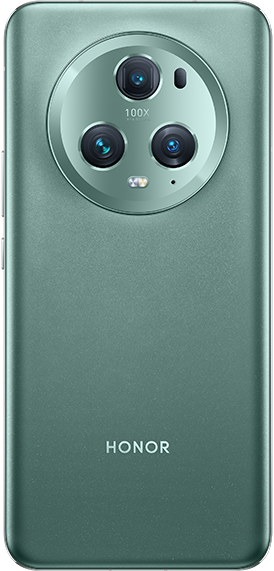
The Honor Magic 5 Pro has a three-camera setup of 50MP. The primary camera of 50MP is aided by a 50MP 122° ultrawide camera and a 50MP periscope telephoto with 3.5X zoom. There’s also a TOF sensor for 3D depth mapping. There’s also a flicker sensor, multi-spectrum colour and temperature sensor to reduce the flickering during shooting and “restore the true beauty and vivid colour of shots”.
Honor Magic 5 Pro is powered by Snapdragon 8 Gen 2 SoC, last year’s flagship chipset from Snapdragon. The phone has a 6.81-inch 2K display that’s curved on all 4 sides.
Honor Magic 5 Pro Camera Specifications
| Lens, Sensor size, and resolution | 50 MP, f/1.6, 23mm (wide), 1/1.12″ 1.4µm, multi-directional PDAF, Laser AF, OIS 50 MP, f/3.0, 90mm (periscope telephoto), PDAF, OIS, 3.5x optical zoom 50 MP, f/2.0, 13mm, 122˚ (ultrawide), 1/2.76″, AF |
| Image Stabilization | OIS + EIS |
| Night Mode | Auto Night Mode, Night Portrait Mode, Night Video mode |
| Video Recording capabilities | 4K@30/60fps, 1080p@30/60fps, gyro-EIS, HDR10, 10-bit video |
| Selfie Camera | 12 MP, f/2.4, 100˚ (ultrawide), 1.22µm TOF 3D, (depth/biometrics sensor) |
| Software Features | Macro Mode, Pro Photography, Night mode video |
Pros and Cons
| Pros | Cons |
| Unique design | Older generation SoC |
| Excellent battery life and charging | |
| IP68 Rating |
Honor Magic 5 Pro DXOMARK Score: 152
Oppo Find X6

The non-Pro version of Oppo flagship, the Oppo Find X6 also finds a place in this list. Oppo Find X6 features a triple camera setup of 50MP. The primary camera is aided by a 112° ultrawide camera and a 2.8X periscope telephoto lens. To the front, the phone features a 32MP selfie shooter.
This phone features the much-famed Hasselblad branding for its cameras. It also features MariSilicon X imaging NPU and features a slightly different sensor setup than the Pro model. Oppo Find X6 is powered by Mediatek Dimensity 9200 and has a 1.5K AMOLED display with a size of 6.74 inches.
Oppo Find X6 Camera Specifications
| Lens, Sensor size, and resolution | 50 MP, f/1.8, 24mm (wide), 1/1.56″, 1.0µm, multi-directional PDAF, OIS 50 MP, f/2.6, 65mm (periscope telephoto), 1/1.56″, 1.0µm, 2.8x optical zoom, PDAF, OIS 50 MP, f/2.0, 15mm, 112˚, (ultrawide), 1/2.76″, 0.64µm, PDAF |
| Image Stabilization | 6 Axis OIS + EIS |
| Night Mode | Super Night Mode Photography, Night Mode portrait |
| Video Recording capabilities | 4K@30/60fps, 1080p@30/60/240fps; gyro-EIS; HDR, 10‑bit video |
| Selfie Camera | 32 MP, f/2.4, 21mm (wide), 1/2.74″, 0.8µm, PDAF |
| Software Features | AI Portrait, Pro Portrait Mode, Super steady video mode, portrait video mode |
Pros and Cons
| Pros | Cons |
| Premium design | Performance not comparable to flagships |
| Good battery and fast charging | Available only in China |
Oppo Find X6 DXOMARK Score: 150
Vivo X100 Pro

The Vivo X100 Pro is a camera-centric wonder, with a tasty 6.78-inch OLED display that supports variable refresh rates from 120Hz to 1Hz. Its innovative camera system features a 50MP primary lens, an autofocusing ultrawide lens that can also take macros, and a one-of-a-kind 100mm periscope telephoto with 4.5-stop optical stabilisation.
The primary camera, which is based on the Sony IMX 989 sensor, captures 12.5MP photos. The 32MP selfie camera enhances its photography abilities. The X100 Pro succeeds as a small powerhouse, reinventing mobile photography in only 120 words, with a user-friendly camera app that offers diverse settings and a strong Pro mode for customization.
In our testing, we found the different portrait photography modes a stand-out feature of Vivo X100 Pro.
Vivo X100 Pro Camera Specifications
| Lens, Sensor size, and resolution | 50 MP, f/1.8, 23mm (wide), 1/0.98″, PDAF, Laser AF, OIS 50 MP, f/2.5, 100mm (periscope telephoto), 1/2″, 0.7µm, PDAF (18cm – ∞), OIS, 4.3x optical zoom 50 MP, f/2.0, 15mm, 119˚ (ultrawide), 1/2.76″, AF |
| Image Stabilization | Sensor-Shift stabilization, Gimbal Stabilization, OIS |
| Night Mode | Pro Night Mode, Starry Sky Mode, |
| Video Recording capabilities |
8K, 4K, 1080p, gyro-EIS, Cinematic mode (4K)
|
| Selfie Camera | 32 MP (wide), f/2.0 |
| Software Features | Zeiss optics, Pro Video Mode, Pro color mode |
Pros and Cons
| Pros | Cons |
| Five focal lengths for high-quality portrait | Notifications need refinement |
| Sunshot mode works well | Average screen-off time |
| Tons of LUTs to play around | Slippery rear panel, faux leather finish was better in X90 Pro |
| Great performance | |
| IP68-certification (finally) | |
| Good screen-on time | |
| Fast charging | |
| Good display |
Vivo X100 Pro DXOMARK Score: 147
Huawei Mate 50 Pro

The previous Mate flagship is also in this list as a final entry. Huawei Mate 50 Pro features a triple camera setup of a 50MP primary camera, a 13MP 120° ultra-wide camera and a 64MP periscope zoom lens with a 3.5X optical zoom. To the front, there is a 13MP selfie shooter.
Huawei calls this camera system the Ultra Aperture XMAGE camera, which auto adjusts the aperture to capture the best shot in any lighting. It also gives the user 10 different aperture sizes to choose from.
The Huawei Mate 50 Pro is powered by Snapdragon 8+ Gen 1 SoC and has a 6.74-inch OLED display with a resolution of 1.5K.
Huawei Mate 50 Pro Camera Specifications
| Lens, Sensor size, and resolution | 50 MP, f/1.4-f/4.0, 24mm (wide), PDAF, Laser AF, OIS 64 MP, f/3.5, 90mm (periscope telephoto), PDAF, OIS, 3.5x optical zoom 13 MP, f/2.2, 13mm, 120˚ (ultrawide), PDAF |
| Image Stabilization | OIS + EIS |
| Night Mode | Night mode photography |
| Video Recording capabilities | 4K@30/60fps, 1080p@30/60/120/240/480fps, 720p@960fps, 720p@3840fps, HDR, gyro-EIS |
| Selfie Camera | 13 MP, f/2.4, 18mm (ultrawide) TOF 3D, (depth & biometrics sensor) |
| Software Features | Macro Mode, Pro Photography, Night mode video |
Pros and Cons
| Pros | Cons |
| Sleek design | Older generation SoC |
| Great sound output | Availability |
| IP68 Rating |
Huawei Mate 50 Pro DXOMARK Score: 149
Best Camera Phones In The World
| Phone | Price | Buying Link |
| Huawei Pura 70 Ultra | €1499 | Huawei |
| Honor Magic6 Pro | €1299 | Honor |
| Oppo Find X7 Ultra | CNY 5999 | N/A |
| Huawei Mate 60 Pro+ | £950 | N/A |
| Huawei P60 Pro | £899.99 | N/A |
| Apple iPhone 15 Pro Max | Rs 1,59,900 | Apple |
| Apple iPhone 15 Pro | Rs 1,34,900 | Apple |
| Google Pixel 8 Pro | Rs 1,06,999 | Flipkart |
| Oppo Find X6 Pro | £1,067 | N/A |
| Honor Magic 5 Pro | £799.99 | N/A |
| Oppo Find X6 | £648 | N/A |
| Vivo X100 Pro | ₹84,999 | Vivo |
| Huawei Mate 50 Pro | £1199.99 | N/A |
FAQs
Q. What are the different types of camera lenses that are found in camera phones?
One can find lenses like wide angle lenses, ultra-wide angle lenses, telephoto lenses, periscope lenses, macro lenses as well as TOF (Time of Flight) or LiDAR sensors available on smartphones these days.
Q. What is aperture and how does it affect the quality of photos?
Parture is what handles the light intake while taking a photo which affects the brightness and overall mood of the photo.
Q. Which camera phone is the best for low-light photography?
Usually, Google’s Pixel Phones are known to be pioneers in night mode low-light photography.
Q. Which camera phone is the best for video recording?
iPhones are the absolute best for Video recording on any smartphone.
Q. Which camera phone is the best for taking selfies?
While all smartphones are good when it comes to selfies the Oppo phones are especially built around selfies in mind.
